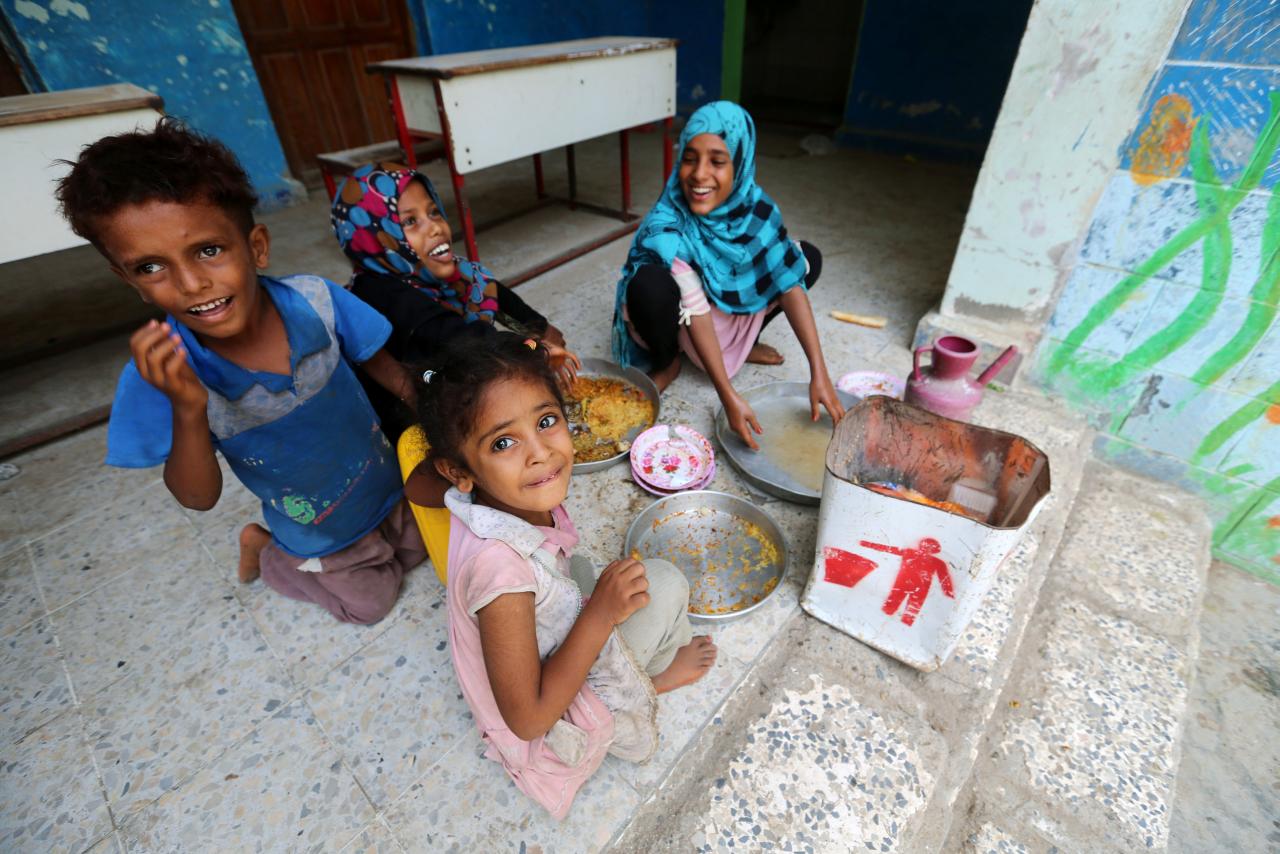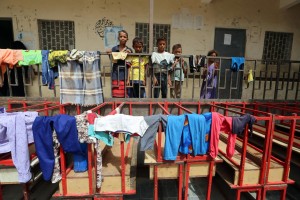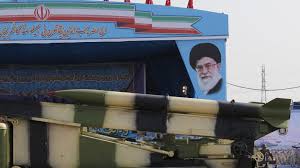Arab coalition bombs Houthis at Hodeidah airport, urges them to withdraw

Arab coalition aircraft bombarded Houthi fighters holed up at the airport of Yemen’s main port Hodeidah on Monday as a senior alliance official said he hoped U.N. diplomacy could coax the Iran-aligned movement to cede the city to “save the population”.
There are fears that a prolonged battle for the city, where the Houthis are dug in to protect critical supply lines from the Red Sea to their bastion in the capital Sanaa, could aggravate what is already the world’s most urgent humanitarian crisis.
The Western-backed Arab alliance launched an onslaught on Hodeidah six days ago in order to turn the tables in a long- stalemated, proxy war between Saudi Arabia and Iran that has compounded instability across the Middle East.
The coalition intervened in Yemen’s war in 2015 after Houthi rebels drove the internationally recognised government into exile. UAE forces are spearheading the Hodeidah offensive, now focussed on the airport of the Red Sea city.
On Monday Apache helicopter gunships fired at Houthi snipers and other fighters positioned on the rooftops of schools and homes in the Manzar neighbourhood abutting the airport compound, according to local residents.
Houthi forces had blocked roads to the airport, they said.
The Houthis’ al-Masira television reported six coalition air strikes on the Duraihmi district in the vicinity of the port.
RELATED COVERAGE
UAE hopes U.N. can convince Yemen’s Houthis to cede Hodeidah – official
Saudi-led coalition taking ‘gradual’ approach to Yemen’s Hodeidah fight, says UAE
The upsurge in fighting has wounded dozens of civilians and prevented aid organisations from reaching parts of Hodeidah.
U.N. human rights chief Zeid Ra’ad al-Hussein voiced concern that the onslaught could endanger millions of civilians.
“I emphasise my grave worry regarding the Saudi and Emirati-led coalition’s ongoing attacks in Hodeidah – which could result in enormous civilian casualties and have a disastrous impact on life-saving humanitarian aid to millions of people which comes through the port,” Zeid told the opening of a three-week session of the U.N. Human Rights Council in Geneva on Monday.
A senior UAE official said the coalition was taking a measured approach to the battle to minimise risks to civilians and was allowing the Houthis an escape route inland to Sanaa.
In addition, 100 trucks of food aid were en route to Hodeidah on the road from coalition-controlled Aden and Mokha to the south, UAE Minister of State for Foreign Affairs Anwar Gargash told a news conference in Dubai.
“METHODICAL” OFFENSIVE
“We have planned diligently around the humanitarian challenge. So what we’re doing is we’ve decided that the operation should be calibrated, should be gradual, should … allow the port to function as long as we can,” he said.

“Our approach is methodical…, gradual,… calibrated to squeeze, to make a point, to allow the Houthis to do the right thing, which is basically decide to withdraw unconditionally.”
Gargash said he was sending a signal to the “Houthis and others that you need to pull out because your days in the city are numbered and you need to as much as possible save the population”.
He said he hoped Martin Griffiths, the U.N. special envoy for Yemen, could convince the Houthis to relinquish the city.
“We are still counting on the U.N. attempt to try and pull a rabbit out of a hat and get Houthi acceptance here.”
Griffiths returned to Sanaa on Saturday. Houthi authorities and the United Nations office in Sanaa said he would stay until Tuesday, after originally saying he would depart on Monday, hinting at possible progress in his discussions.
Gargash estimated the number of Houthi fighters in Hodeidah at between 2,000 to 3,000. “(They are) militia, non-descript, not in uniform, majority work in small groups, snipers, with heavy extensive use of anti-personnel and other mines. Many of these mines are Iranian-(made),” he said.
Gargash declined to reveal the size of coalition forces but said they enjoyed “numerical superiority”.
The Arab alliance has asserted that it can take Hodeidah quickly enough to avoid interrupting aid and that it would focus on capturing the airport and port and avoid street fighting.
STRONG HOUTHI HOLD ON HODEIDAH
But the coalition has not tried to capture such a heavily defended major city since entering the war, and humanitarian groups fear the battle for Hodeidah could drag out.
This would intensify the suffering of civilians who have already endured devastating air strikes, port blockades, hunger and a cholera epidemic.
Yehia Tanani said he and his family left Manzar three days ago and walked for 3 km (1.86 miles), hiding behind walls and under trees to avoid air strikes, before finding shelter at a fish farm. Others s




